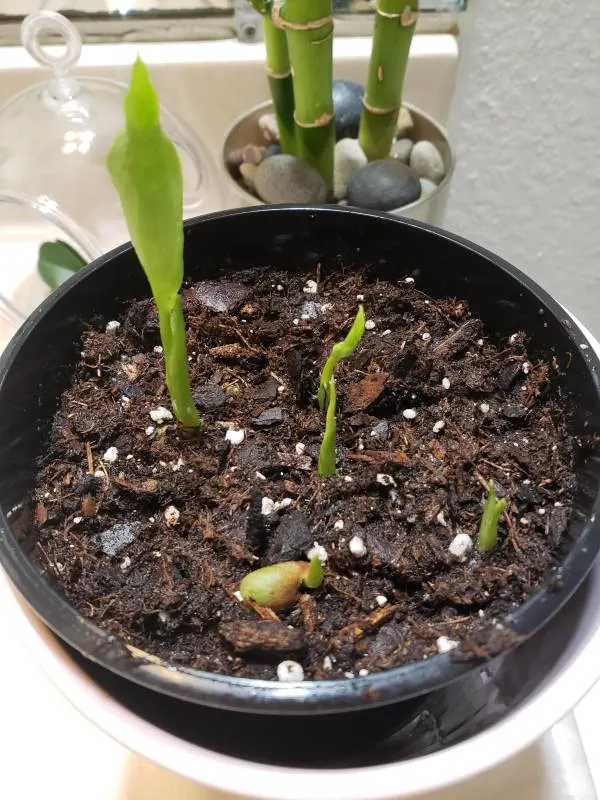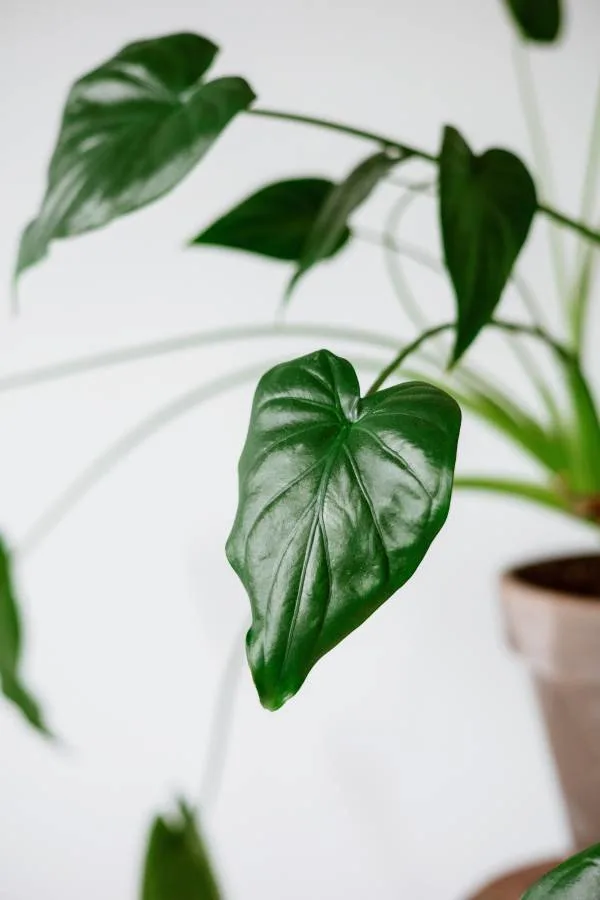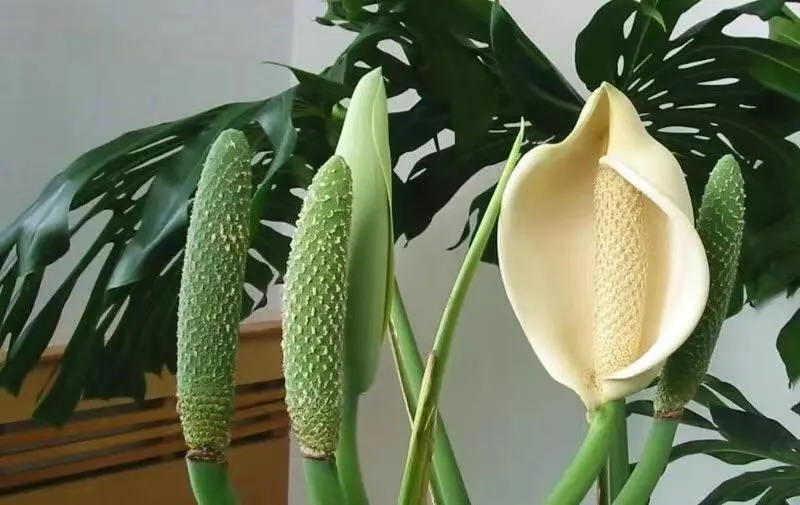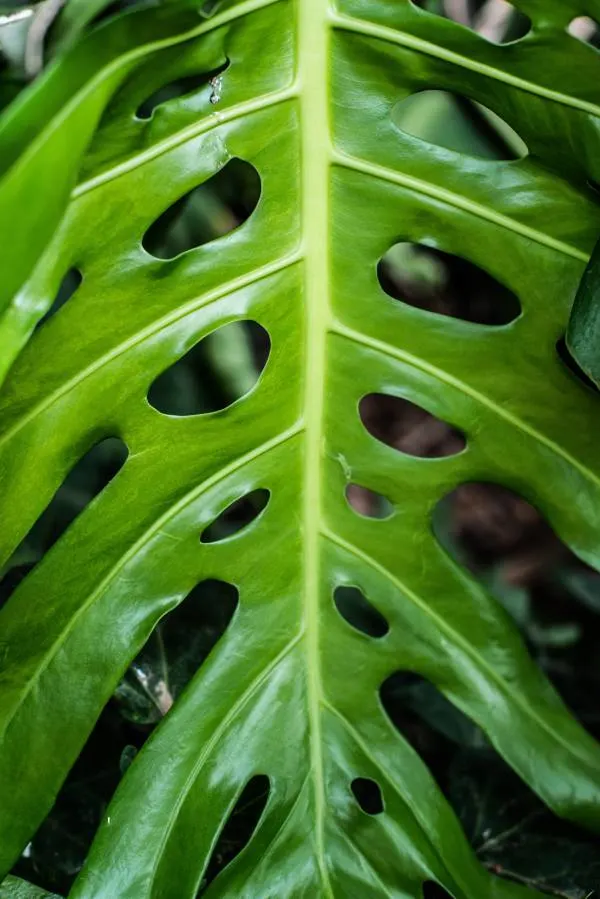Monsteras, affectionately known as Swiss cheese plants, are a popular choice for indoor and outdoor gardening enthusiasts. Their popularity not only comes from their unique aesthetic appearance but also from the fact that they are pretty easy to take care of.
The stages of Monstera growth from a small seedling to a mature plant are FANTASTIC and involve exciting changes that urge people to learn about them.
I bet you are curious too, aren’t you?
Worry not!
Today, in this article, we will discuss the Monstera growth stages in detail.
So, without further ado, let’s get started!

Monstera Plant Growth Stages
On average, Monstera plants take about 2 to 3 years to reach maturity. However, with proper care, they continue to increase in size over time.
To understand their growth journey better, it’s crucial to explore the distinct growth stages of the Monstera plant separately.
So, let’s discuss the different growth stages of Monstera in detail!
1. Seed Germination Phase
Monstera plants are typically propagated through stem cuttings or by dividing mature plants rather than growing from seeds. Germinating Monstera seeds can be challenging, and success rates are often low.
Still growing it from seeds is really exciting.
Monstera seeds need moisture and a temperature between 70 to 85°F to activate and grow. If it’s too dry or cold, they’ll lie dormant within the soil until they dry out completely.
Therefore, to help them sprout, you’ll need to soak them in lukewarm water for a day.
Then, plant them in a container with good soil and drainage holes.
Keep the soil moist, not too wet, and put the container in a warm, bright place (but not in direct sunlight).
Once they wake up, the first visible change you’ll see is the emergence of a tiny root called the radicle. It grows a few centimeters to anchor the seed and get water and nutrients from the soil.
After that, a shoot (plumule) and the first leaf (cotyledon) show up.
Unlike the root, they grow upwards, and when they break through the soil, your seed officially becomes a seedling!
This whole process usually takes 30 to 60 days, but in perfect conditions, you might see growth in just 14 days.
Seedlings Growth Phase
When a Monstera plant is just a baby, it relies on its seed for support and nutrients.
The plant will go creeper on the ground since, right now, it doesn’t have much strength to climb upwards.
The first leaves that emerge are called cotyledons, and they fall off after a few weeks as the plant’s true leaves start growing.
Some species of Monstera plants show negative phototropism and grow in the direction of darkness, which increases the chances of getting a shadowy tree trunk or a dark place.
After a few weeks, they become juveniles, still needing attention but less delicate than when they were seedlings.
Note: Remember, growing Monsteras from seeds involves a crucial and delicate seedling phase, where proper care (discussed later) sets the foundation for a healthy and strong plant that brings joy for years.

Juvenile Growth Phase
The Juvenile Stage of Monstera starts right after the seedling stage and will last until the plant reaches maturity – a time of great excitement for those who love plants.
In this phase, small, oval-shaped leaves start protruding. They’re vibrant green and neatly lined up on the stem without any holes or slits. The exact look of these leaves can vary among different Monstera species and, in some cases, different varieties within the same species.
As the plant grows, the leaves get bigger and become more irregular in shape.
But this stage is not just about the leaves.
Below the soil, the roots are busy getting stronger and spreading out.
You might also notice aerial roots growing along the stem. These roots grow above the ground, allowing climbing plants like Monstera to grip onto surfaces and absorb moisture from the air.

Mature Growth Phase
Once your Monstera grows up, it enters the adult stage, and things get pretty exciting!
During this phase, the Monstera plant will continue to produce new leaves but at a slower rate than during the juvenile stage. The leaves will keep getting thicker and more leathery, making them resistant to damage.
The coolest part about this phase of growth is that Monstera plants might start making awesome flowers and fruits.
These flowers are shaped like spiky cones that can grow up to a foot long.
But remember, not every Monstera plant will make flowers. And even if they do, it might take a few years before they show up.
Apart from that, as your plant reaches maturity, it starts producing aerial roots and begins to climb.
At this point, if you don’t give it something to climb on, the leaves may get too heavy and cause the stem to bend or break.
So, it is better to give either a moss pole or a trellis to climb – which ultimately ensures the healthy growth of the Monstera without any breaks in the stem.

Leaf Fenestrations Phase
Fenestration is the natural formation of large, gaping holes or perforations in leaves.
Many different types of Monstera demonstrate this feature, which is highly attractive to plant lovers.
Leaf fenestrations should begin to occur in the plant anywhere from 6 months up to a year and continue for the rest of its life.
This unique feature gives the plant its nickname, “Swiss Cheese Plant.”
Want to know the reason for these fenestrations?
There are many reasons why the Monstera leaves form fenestrations, but the most suitable explanation is that these fenestrations help the plant cope with high winds and heavy rains.
The holes act as little windows that allow the wind and water to pass through the leaves easily without causing any harm to them.
In fact, the fenestrations in Monstera occur in different stages.
Let’s discuss all these stages for better understanding.

Note: Not all the leaves of a Monstera plant guarantee fenestration, and it’s completely normal for a plant to have varying fenestrations from leaf to leaf.
Solid Growth Phase
During the initial phase of fenestration, the Monstera leaves appear solid without any visible slits or holes.
Although it may seem like nothing much is happening, this stage is crucial as the plant is quietly establishing the foundation for the development of fenestrations in the future.
Side Slit Growth Phase
During the second stage, you’ll observe the emergence of slits along the sides of the leaves.
These slits, typically measuring one to two inches in length, don’t go all the way through the leaf.
This marks the initiation of fenestration development, a thrilling phase where you can witness the captivating growth of your plant.
Midrib Growth Phase
In the third stage, the midribs of the leaves undergo the development of primary, secondary, and tertiary perforations.
These holes exceed the size of the side slits and extend completely through the leaf.
Full Growth Phase
During the fourth stage, the fenestrations are developed fully and make the leaves look like holey cheese.
It is the most striking stage of fenestration development, and it happens when the plant’s leaves are at their most visually striking and mature state.
Caring for Monstera Through Each Growth Phase
If you want to see a healthy, wealthy Monstera plant, it is essential to take proper care during each stage of its growth.
Don’t know what steps you should take during each growing phase?
Worry not!
Here are some tips on caring for your Monstera through each phase of its growth:
Care Tips for the Seedling Phase:
Caring for Monstera seedlings involves specific attention to their needs as they transform from germination to becoming more established plants.
Here are some caring tips for the Monstera seedling phase:
Light: Provide bright, indirect light for Monstera seedlings. Though young shoots require bright light for photosynthesis. Still, avoid exposing them to direct sun, as it can be too harsh for their young and delicate leaves.
Temperature: Maintain a warm environment, ideally between 70–75°F (21–24°C). Avoid sudden temperature fluctuations.
Humidity: Monstera seedlings benefit from higher humidity levels. You can increase humidity with a tray of water or using a humidifier.
Watering: Make sure the soil stays damp but not waterlogged. Water it only when the top inch of the soil feels dry. Don’t let the soil stay too wet, as overwatering can lead to root rot.
Fertilization: Start feeding Monstera seedlings with a diluted, balanced liquid fertilizer once every 2–3 weeks during the growing season.
Monstera seedlings can be delicate, so it’s important to monitor their progress closely and adjust care accordingly. As they mature, you can gradually choose standard Monstera care practices that are suitable for more established plants.
Care Tips for the Juvenile Phase:
Caring for juvenile Monstera involves a balance of providing proper conditions for growth and helping the plant establish a strong foundation.
Here are some caring tips for Monstera during the juvenile phase:
Light: Continue to provide bright, indirect light. Juvenile Monstera plants typically tolerate slightly more light than seedlings but avoid prolonged contact with direct sunlight, particularly during the hottest part of the day.
Temperature and Humidity Levels: Maintain a warm environment, preferably between 65–80°F (18–27°C), with moderate to high humidity levels – around 60%. Monstera is sensitive to cold temperatures, so avoid cold drafts and sudden temperature fluctuations.
Watering: Keep the soil damp but not waterlogged. Water only when the top inch of the soil feels dry. Adjust watering according to the environment and the specific needs of your plant.
Soil: Use a well-draining potting mix designed for tropical plants with added organic matter, such as bark or coconut coir, which is suitable for juvenile Monstera.
Fertilization: Feed the plant with a regular balanced liquid fertilizer every 2–3 weeks during the growing season (spring and summer). Reduce or stop fertilizing in the fall and winter when the plant’s growth slows down.
Support: Provide support for the growing vines if needed. You can use stakes or a moss pole to encourage upward growth and help the plant develop a more upright, bushy shape. Consider training the vines if you want a more compact and bushy appearance.
By providing the right conditions and care during the juvenile phase, you can help your Monstera develop into a healthy plant.
Care Tips for the Mature Phase:
Caring for a mature or adult Monstera involves some adjustments compared to the care provided during the earlier stages.
At this stage, the plant is likely larger and has developed its characteristic fenestrated leaves.
Here are caring tips for a mature Monstera:
Light: Provide bright, indirect light during the plant’s active growing season. You can provide direct sunlight in winter when the sun is less intense.
Humidity: Although Monstera is adaptable, it still appreciates moderate to high humidity. Maintain humidity levels by misting the leaves regularly, using a humidity tray, or placing a humidifier nearby.
Watering: Wait until the top 2 inches of the soil to dry out before watering. Water thoroughly, ensuring that excess water drains from the bottom of the pot.
Fertilization: Feed with a balanced liquid fertilizer every 2–3 weeks during the growing season (spring and summer). Reduce or stop fertilizing in the fall and winter when growth slows down.
Support: Provide support for the long vines if needed. Mature Monstera plants may produce long vines that can benefit from a moss pole or other support structures. Regularly check the support to ensure it’s stable and effective.
Pruning: Trim and prune as needed to maintain the desired shape and size. Remove any yellow or damaged leaves. Pruning can help control the plant’s size and encourage bushier growth.
Repotting: Consider repotting every 1–2 years or when the plant has outgrown its current container. Refresh the soil and inspect the roots for any signs of overcrowding or disease.
Rotate the Plant: Rotate the plant occasionally to ensure uniform light exposure on all. This helps maintain a balanced and symmetrical growth pattern.
Caring for a mature Monstera involves a balance of light, water, and nutrients to support its continued growth and maintain its health and appearance.
Regular monitoring and adjustments to the care routine based on the plant’s specific needs will contribute to a thriving mature Monstera.
Conclusion!
Nurturing a Monstera plant and enjoying watching it go through different life stages is a real joy!
From tiny seeds to sprawling vines, each phase demands attention and care.
Remember, these charming Swiss cheese plants thrive with bright, indirect light and moist but not waterlogged soil.
Whether it’s the early days of seed germination, the delicate period of juvenile growth, or the exciting maturity with fenestrated leaves resembling holey cheese, your Monstera deserves good care.
Patience is vital as the plant’s journey progresses over 2-3 years.
So, embrace the joy of watching your Monstera evolve, knowing that each stage contributes to the vibrant and strong nature of this delightful companion in your indoor garden.
If you feel that this post has added some value to your life, don’t forget to share it with your friends!
Warmly,
Moiz Atiq.
